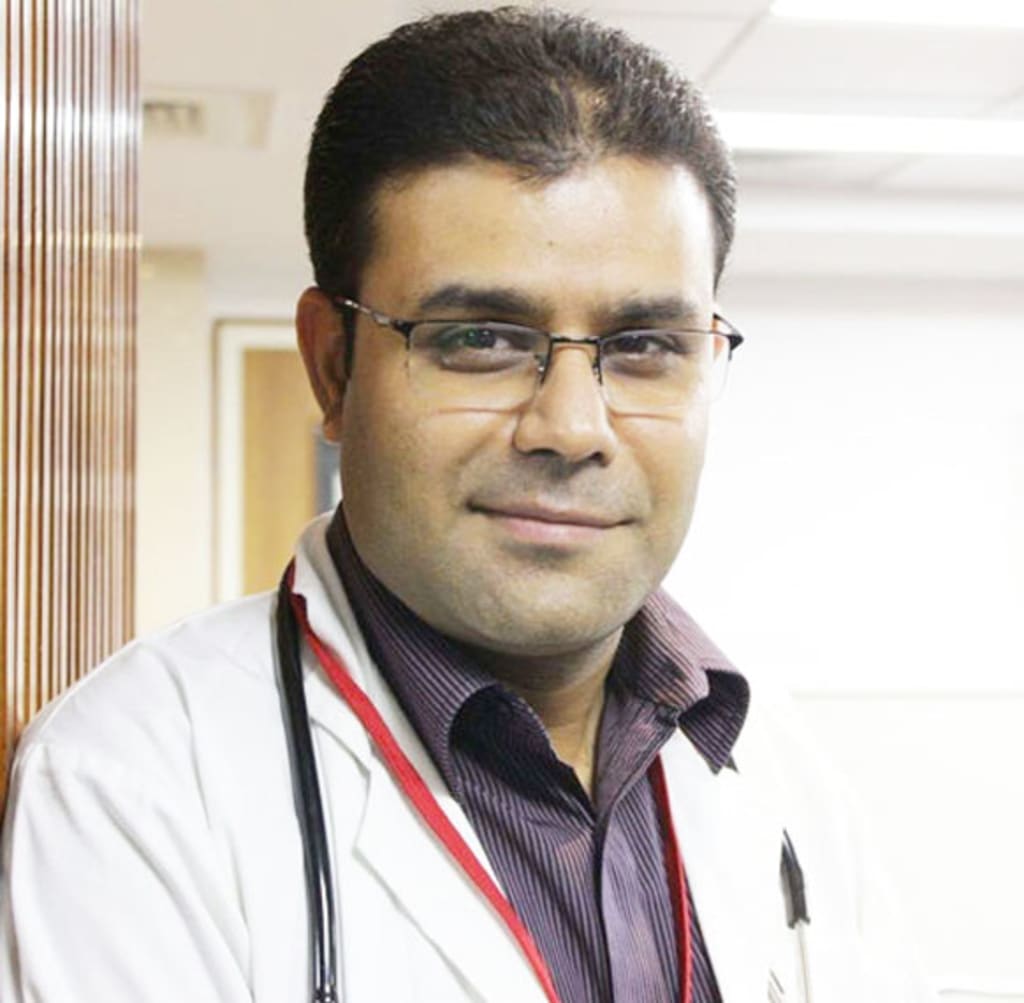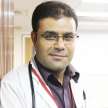Lung Transplant Surgeon in Gurgaon and Delhi
Lung Transplant In Delhi and Gurgaon, India

A lung transplant is a surgical procedure to replace a diseased or failing lung with a healthy lung, usually from a deceased donor. A lung transplant is reserved for people who have tried medications or other treatments, but their conditions haven't sufficiently improved.
Depending on the medical condition, a lung transplant may involve replacing one of your lungs or both of them. In some situations, the lungs may be transplanted along with a donor heart.
While a lung transplant is a major operation that can involve many complications, it can greatly improve your health and quality of life.
History
Attempts at lung transplantation have occurred as early as 1946 when Vladimir Demikhov, a Soviet scientist, attempted single-lung transplantation in a dog. This transplant ultimately failed from bronchial anastomotic dehiscence, and difficulties with this anastomosis would plague clinical lung transplantation for the next 40 years. Henri Metras, in 1950, reported the first successful dog lung transplant and the first bronchial artery and left atrial anastomoses. In a nonhuman primate model, performed lung reimplantation and showed that these lungs were able to maintain function postoperatively, despite denervation. On June 11, 1963, reported the first human lung transplant; however, the patient died from kidney failure after 18 d. The first real survivor during this early era of lung transplantation was a patient of Fritz Derom’s in Belgium.This patient, however, survived only 10 mo. The failure of this early experience in clinical lung transplantation can be summarized by inadequate immunosuppression and difficulties with the bronchial anastomosis.
The advent of cyclosporine brought about significant improvements in patient survival following liver and kidney transplantation. This led to a resurgence of interest in heart/lung transplantation in Stanford and lung transplantation in Toronto. The first successful combined heart–lung transplant was completed by Reitz and colleagues and showed that a grafted lung could survive and function in a recipient. Research performed by Cooper’s group in Toronto showed that corticosteroid use appeared to be a significant factor in the weakness of the bronchial anastomosis. With the use of cyclosporine, corticosteroid use could be reduced, leading to improved bronchial healing. In 1986, the Toronto Lung Transplant Program reported the first successful single-lung transplantations for two patients with pulmonary fibrosis. This team went on to perform the first successful double-lung transplant, first with an en bloc technique that used a tracheal anastomosis, then evolving to the bilateral sequential transplantation technique that not only improved airway healing, but also had the additional benefit of avoiding cardiopulmonary bypass, if desired. This technique remains the standard technique in use to this day.
Indication
Lung transplantation is indicated for patients with chronic, end-stage lung disease who are failing maximal medical therapy, or for whom no effective medical therapy exists. General indications include:
• Untreatable end-stage pulmonary disease of any etiology
• Substantial limitation of daily activities
• Limited life expectancy
• Ambulatory patient with rehabilitation potential
• Acceptable nutritional status
• Satisfactory psychosocial profile and emotional support system
Some of the diseases that may require a lung transplant among this population include:
• Chronic obstructive pulmonary disease (COPD)
• Cystic fibrosis and bronchiectasis for other causes
• Idiopathic pulmonary fibrosis and non-specific interstitial pneumonia
• Pulmonary hypertension
• Sarcoidosis
• Lymphangioleiomyomatosis
• Bronchoalveolar carcinoma
• Re-transplant bronchiolitis obliterans
• Bronchopulmonary dysplasia or chronic lung disease
• Heart disease or heart defects affecting the lungs
Types of transplant
There are 3 main types of lung transplant:
A single lung transplant – where a single damaged lung is removed from the recipient and replaced with a lung from the donor; this is often used to treat pulmonary fibrosis, but it's not suitable for people with cystic fibrosis because infection will spread from the remaining lung to the donated lung.
A double lung transplant – where both lungs are removed and replaced with 2 donated lungs; this is usually the main treatment option for people with cystic fibrosis or COPD.
A heart-lung transplant – where the heart and both lungs are removed and replaced with a donated heart and lungs; this is often recommended for people with severe pulmonary hypertension. The demand for lung transplants is far greater than the available supply of donated lungs. This means a transplant will only be carried out if it's thought there's a relatively good chance of it being successful.
What is the procedure for lung transplant?
Lung transplantation is a complex surgical procedure performed to replace a diseased or damaged lung with a healthy lung from a donor. Here is a general overview of the procedure:
1. Evaluation and Listing: The process begins with an extensive evaluation to determine if a patient is a suitable candidate for lung transplantation. The evaluation involves medical tests, imaging studies, and consultations with a transplant team, including pulmonologists, surgeons, psychologists, and social workers. If the patient meets the criteria, they are placed on a waiting list for a suitable donor organ.
2. Waiting for a Donor: While waiting for a suitable donor, the patient undergoes regular check-ups and medical monitoring. The waiting time can vary significantly, ranging from days to months or even longer, depending on the availability of donor lungs that match the patient's blood type, tissue compatibility, and size.
3. Organ Matching: When a potential donor organ becomes available, a thorough assessment is conducted to determine its suitability for transplantation. The donor lung is evaluated based on factors such as blood type compatibility, tissue compatibility, size matching, and overall organ function.
4. Preparing for Surgery: Once a suitable donor lung is identified, the patient is notified, and preparations for surgery begin. The patient is admitted to the hospital, and pre-operative tests and procedures are performed. These may include blood tests, imaging studies, lung function tests, and discussions about the surgical process.
5. Anesthesia and Incision: On the day of surgery, the patient is brought to the operating room, and general anesthesia is administered. The surgeon makes an incision in the chest to access the diseased lung.
6. Lung Removal: The surgeon carefully removes the diseased lung while preserving surrounding blood vessels and airways. In some cases, both lungs may need to be removed, depending on the patient's condition.
7. Donor Lung Implantation: The healthy donor lung is prepared for transplantation by connecting the blood vessels and airways. The surgeon carefully sutures the blood vessels and airways of the new lung to the patient's existing blood vessels and airways.
8. Chest Closure: After the new lung is securely in place, the surgeon closes the incision in the chest using sutures or staples. Chest tubes may be inserted to drain excess fluid and air from the surgical site.
9. Recovery and Post-Transplant Care: The patient is transferred to the intensive care unit (ICU) or a specialized transplant unit for close monitoring. Recovery after lung transplantation can be challenging, and the patient may need to stay in the hospital for several weeks. They will receive immunosuppressive medications to prevent organ rejection and undergo extensive rehabilitation, including physical therapy and respiratory exercises.
10. Follow-up Care: After discharge, the patient continues to receive ongoing care and regular follow-up visits with the transplant team. Long-term management involves taking immunosuppressive medications, monitoring lung function, and adopting a healthy lifestyle to promote overall well-being.
It's important to note that this is a general overview, and the specific details of the procedure can vary depending on the patient's condition, the transplant center, and the surgical techniques employed by the medical team.
Lung Transplant Surgeons in Gurgaon
Are you looking for the best lung transplant surgery in India at an affordable cost? Meet Dr. Harsh Vardhan Puri, a Lung Transplant Surgeon in Gurgaon and Delhi, India, who provides Lung Transplant.
About the Creator
Dr. Harsh Vardhan Puri
Dr. Harsh Vardhan Puri is one of the Best Thoracic surgeons in Gurgaon and Delhi, with expertise in Lung Cancer Treatment, Thymoma Treatment, Pneumothorax Treatment, Tracheal Stenosis Treatment, VATS Surgery, and Robotic Chest Surgery






Comments
There are no comments for this story
Be the first to respond and start the conversation.